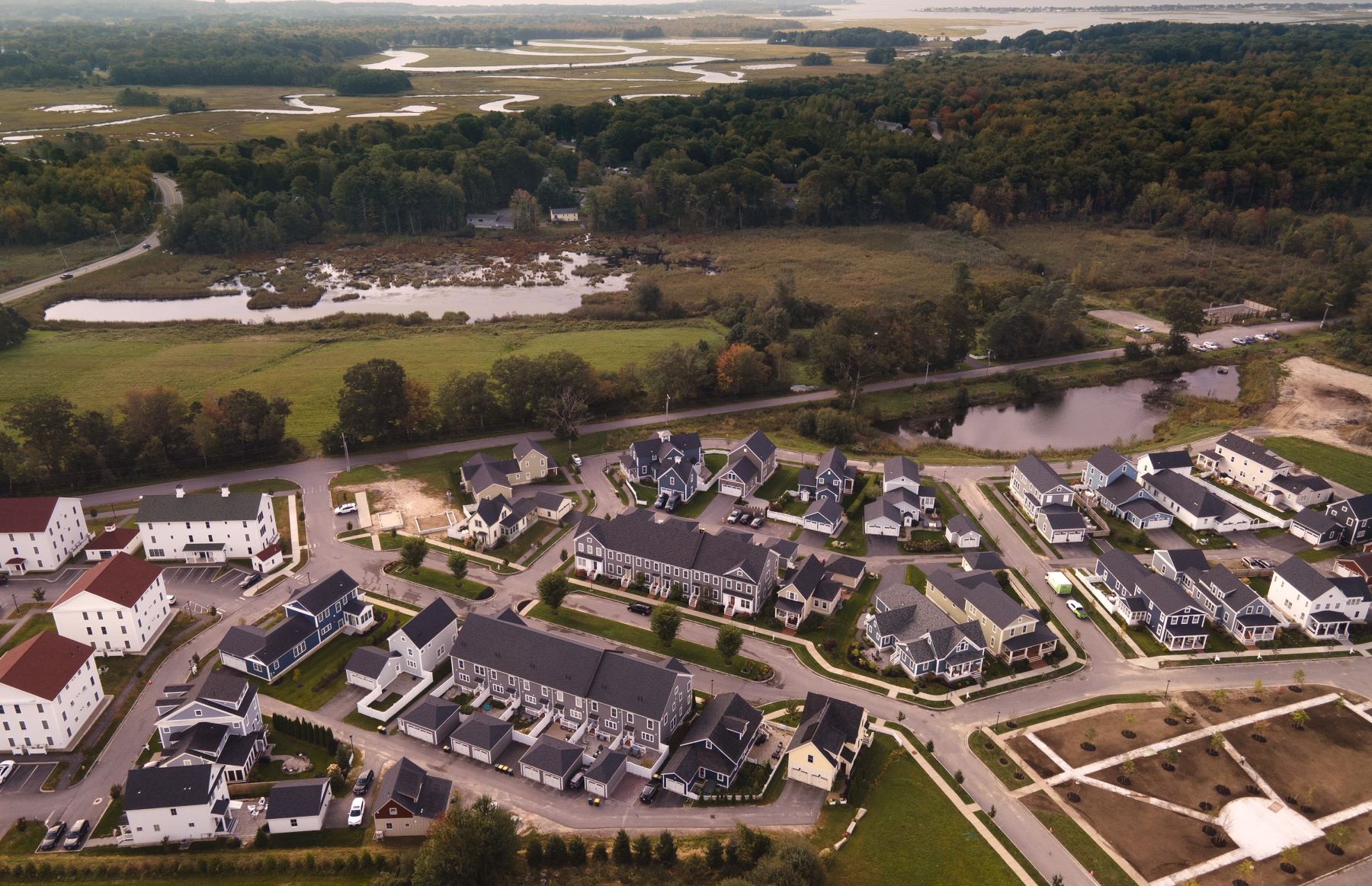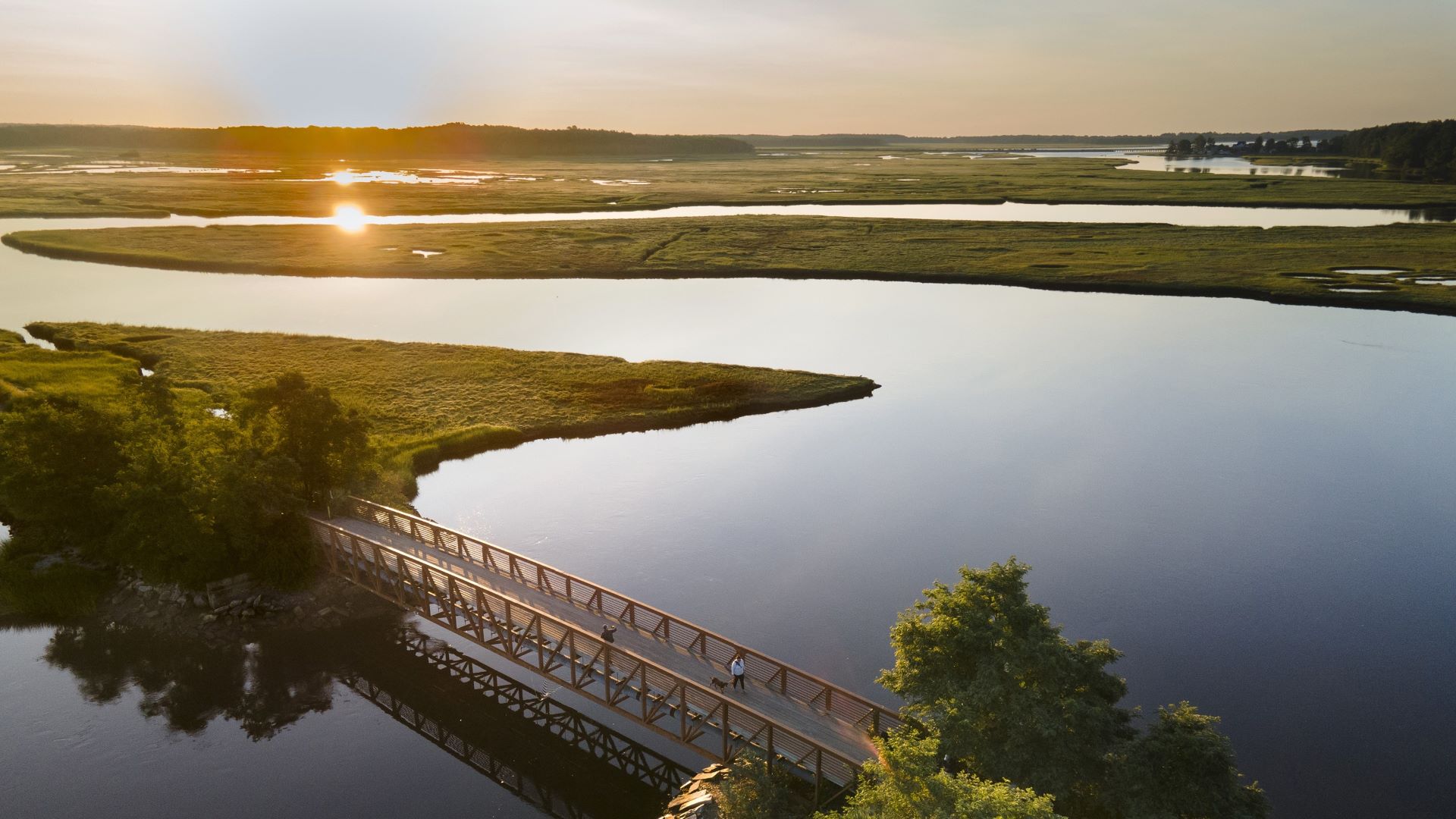
Coastlines reporting initiative. For more information, go to
pulitzercenter.org/connected-coastlines.
This story is part of a series on marshes in Maine co-published with the Portland Press Herald.
SCARBOROUGH — Linda Woodard first came to Scarborough Marsh when she was 16, and that visit as a chaperone for her mother’s second-grade class shaped the course of her entire life.
“I was just entranced. I was like, ‘this is it,’” said Woodard on a muggy morning in August, as she checked in visitors to the Scarborough Marsh Audubon Center. Woodard has been working with the Audubon for more than 35 years.
At 3,200 acres, Scarborough Marsh is the largest contiguous salt marsh left in the state.

In many ways, it’s a conservation success story: a vast, largely uninterrupted habitat block in one of Maine’s fastest-growing towns, home to an astonishing array of species, including the “solitary and secretive” saltmarsh sparrow and slender sea lavender, its purplish-blue flowers a favorite of butterflies.
Great Egrets stalk its banks, and small spiny sticklebacks swim in its waters. There are bats and minks and Harbor seals, muskrats and short-billed Dowitchers, plovers and red-winged blackbirds.
But that success is threatened as sea levels rapidly rise, storms intensify, and development presses in, leaving the marsh little room to migrate upland to stay healthy, and threatening to turn vast stretches of nutrient-rich, carbon-trapping peat into mud flats.
“The sprawl has really come in,” Woodard told the Press Herald in 2018, years before the COVID-19 pandemic accelerated the pressure to build more housing in the area. “There really is no place for the marsh to migrate to.”
A healthy salt marsh — one in which water flows unimpeded throughout — can keep up with a certain rate of sea level rise, as long as salt-tolerant plants are able to grow and trap sediment, building the marsh surface and rolling it inland.
But if barriers cause water to pool and stagnate, killing vegetation, or if sea levels rise too quickly, or if there is no room inland, a marsh that could have migrated will drown.

In Scarborough, “the limitation to marsh migration is development,” said Jeremy Gabrielson, a senior conservation and community planner with Maine Coast Heritage Trust. “There’s a lot of land that’s at the right elevation that could accommodate marsh migration, but it’s got houses and roads on it that presumably people are going to take action to defend.”
Steve Pinette, president of the nonprofit Friends of Scarborough Marsh, said the group is working with the state, which owns most of the land, to identify places for the marsh to go, quietly approaching property owners to ask if they would consider conserving their land as potential future marsh, typically by selling, donating or placing an easement over it.
Seventy-five percent of wetlands in the United States are privately owned, according to the Maine Department of Environmental Protection, which means private property owners will be integral to the preservation and protection of wetlands.

Property owners can get tax breaks for putting certain types of easements on their land, but incentivizing them to donate or sell it for conservation — often below market value — can be difficult.
“The reality is that oftentimes the land trust doesn’t have the funds, or can’t maybe pay what that highest value is,” said Scott Townsend, of Keller Williams Realty.
Property is often a family’s most valuable asset, and they may need the most money possible from a property sale to care for an ailing family member, or be able to retire.
Often the “highest and best use from a dollar standpoint is development,” said Townsend, “which goes against conservation.”

Nearby development also threatens the marsh ecology with stormwater runoff, which can bring chemicals and fertilizers from nearby lawns into the marsh.
Invasive species thrive on the edge, particularly near homes and businesses, said Pinette, including the fast-growing, giant, reedy grass Phragmites australis, which can grow to a towering 14 feet and crowds out many native plants.
“[Stormwater runoff] is lowering the salinity of the marsh, sometimes to almost zero,” said Pinette. “After a rainstorm you get a lot of discharge — it’s from a lot of these subdivisions.”
Storms change the conversation
Stronger storms and rapidly rising seas have increasingly left their mark on the Scarborough Marsh Audubon Center in recent years. The building is now perched between the edge of the water and Route 1, which becomes impassable several times a year because of high water, said Woodard.
A parking lot that once wrapped around the back of the center eroded into the Nonesuch River. The side parking lot floods regularly, and a storm in December 2022 opened several holes in the floor.
“With climate change, we just get those extreme floods, and extreme storms, which we used to get once in a great while,” said Woodard.
Now, they’re every year.

Back-to-back storms in January brought the issue to the forefront for many coastal towns and cities, including Scarborough, which, along with Cape Elizabeth, recently decided to remove a low-lying, lightly traveled road through the Spurwink Marsh.
Removing the road will restore tidal flow to 67 acres of the upper marsh, which provides habitat for the endangered salt marsh sparrow and is part of the Rachel Carson National Wildlife Refuge.
“We’re talking a lot about the road, but for me, I think this is really about an investment in our marsh,” Scarborough Town Councilor Jonathan Anderson said, according to reporting in the Press Herald. “The marsh is really integral to who we are as a community and we need to do more to protect it even if (the road) wasn’t getting flooded.”
January’s storms also brought concerns about flooding to the forefront for many buyers and sellers, Townsend said. Some want to ensure the property they’re buying isn’t in a flood zone, or even near one. Others are concerned about getting insurance, which is getting hard to find as companies pull out of coastal areas.
Where some are fleeing coastal properties, however, others see an opportunity to buy waterfront at a discount, or a chance to buy a home that might rarely come up for sale.
“It’s sort of like front-row concert tickets,” said Townsend. “You’re going to pay more for them, and you’re either going to enjoy it, or it could be, you know, an uncomfortable experience. But there are people that want to be at the front row for the show.”







